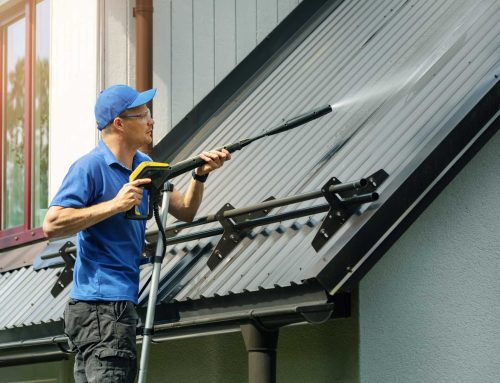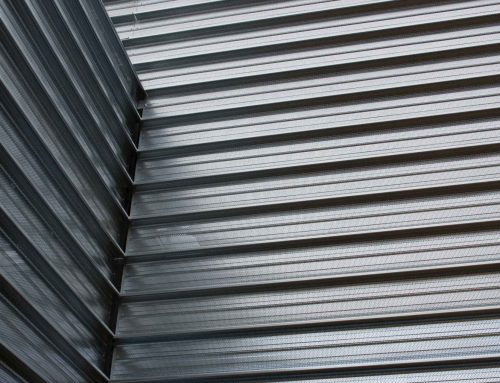That soothing sound of rainfall can quickly become a source of anxiety for homeowners if gutters are not performing as they should. This seemingly minor maintenance task is, in fact, a crucial defence for a home against potentially serious and expensive damage. Clogged gutters can lead to costly water damage and roof issues, turning a simple overflow into a major headache down the line.
Knowing how to clean them properly—and safely—can help protect your home’s structure while extending the life of your exterior systems. This is more than just clearing out leaves; effective gutter maintenance safeguards a home’s foundation, siding, and even landscaping. Here’s a step-by-step guide to doing it right, ensuring these vital channels function optimally to protect your valuable investment.
The “Why”: Understanding the Havoc of Clogged Gutters
When gutters get clogged with leaves, twigs, and other debris, they cannot direct rainwater away from the home as intended. This overflow can lead to a host of problems. Trapped water can seep under roof shingles, causing rot in the fascia boards, soffits, and even the underlying roof deck, leading to leaks and expensive repairs. Moreover, water pouring over the sides of clogged gutters can saturate the ground around the foundation, potentially causing cracks, basement flooding, and long-term structural instability.
The trouble does not stop there. Misdirected water can stain and damage siding and peel paint, diminishing a home’s curb appeal and protective barrier. Runoff can also erode landscaping, washing away precious soil and plants. Damp, debris-filled gutters create an inviting habitat for pests like mosquitoes, rodents, and insects. For homes in colder Canadian climates, clogged gutters are a primary cause of ice dams in winter, which can force water back under shingles, leading to significant interior water damage.
Safety First! Your Gutter Cleaning Non-Negotiables
Before starting any gutter cleaning project, prioritizing safety is absolutely essential. When using a ladder, select one that is sturdy, appropriate for the height (it should extend at least one metre, or three feet, above the roofline), and placed on firm, level ground. Follow the 4-to-1 rule for the correct angle: for every four units of height, the base should be one unit away from the wall. Always maintain three points of contact on the ladder and never overreach; it is far safer to move the ladder frequently. Using ladder stabilizers can provide extra security and prevent gutter damage.
Equipping oneself with the right Personal Protective Equipment (PPE) is also crucial. Wear sturdy, non-slip footwear for good grip, and heavy-duty work gloves to protect hands from sharp debris and grime. Safety glasses or goggles are a must to shield eyes from falling particles. It’s also wise to check the weather forecast – avoid cleaning gutters during rain, high winds, or icy conditions. Be acutely aware of any overhead power lines, maintaining a safe distance. If possible, work with a spotter or at least inform someone of the task at hand.
Assembling Your Gutter Cleaning Toolkit
Having the right tools makes the gutter cleaning process safer and more efficient. A sturdy ladder, as previously discussed, is paramount. For removing debris, a specialized gutter scoop or even a small garden trowel works well to lift out leaves, twigs, and compacted gunk. Have a bucket ready to collect the debris; one with a wire handle can be conveniently hung from the ladder with an S-hook. Spreading a tarp or drop cloth on the ground directly below the work area will catch falling debris, simplifying cleanup considerably.
For the flushing stage, a standard garden hose fitted with a spray nozzle that allows for adjustable pressure and pattern is essential; a pistol-grip nozzle or an angled wand attachment can make directing water easier. For more stubborn blockages, particularly in downspouts, keeping a plumber’s snake or a flexible auger on hand can be very useful. While optional, some homeowners find gutter cleaning attachments for leaf blowers or wet/dry vacuums helpful, but these should be used with caution to avoid blowing debris everywhere or damaging the gutters.
The Main Event: Your Step-by-Step Guide to Cleaner Gutters
With safety measures in place and tools at the ready, the cleaning process can begin. Start by setting up the ladder securely in the first work section and placing the tarp below. Position the collection bucket conveniently. Begin scooping out the larger, loose debris like leaves and twigs, starting near a downspout opening and working away from it. Remove debris in manageable sections, depositing it directly into the bucket to avoid making a mess on the roof or ground.
Once the bulk of the solid material is removed from a section, use the garden hose to flush out the remaining fine particles and dirt, directing the flow towards the nearest downspout. Observe how the water flows; it should move freely. If water backs up or drains slowly, the downspout is likely clogged. Try to clear it by directing a strong jet of water into the downspout opening. If this fails, gently tap the sides of the downspout or use a plumber’s snake to dislodge or retrieve the blockage, ensuring water exits unimpeded at the bottom and flows away from the foundation.
After the Clean: Inspection, Minor Repairs & Prevention
Once the gutters are clear, and while still safely positioned, take the opportunity to inspect the system thoroughly. Look for any loose or damaged gutter sections, paying attention to brackets, hangers, and seams. Check for any visible cracks, holes, or areas where leaks might occur. Ensure that all downspouts are securely attached to both the gutter outlet and the side of the house, and that they are effectively directing water well away from the home’s foundation.
If any minor issues are spotted and one feels comfortable and safe performing simple fixes, now is the time. This might include tightening loose screws on hangers or applying a specialized gutter sealant to small cracks or holes (ensure the area is clean and dry first). To reduce future clogs, consider trimming back any tree branches that overhang the roofline. Homeowners might also explore installing gutter guards, screens, or covers, weighing the pros and cons of different systems against their maintenance requirements and effectiveness in keeping debris out.
Know Your Limits: When to Call in the Professionals
While DIY gutter cleaning is manageable for many, there are situations where calling in a professional service is the safest and most sensible option. If a home is particularly tall, such as two storeys or more, or if the gutters are very difficult to access safely with standard equipment, professionals have the specialized ladders and safety gear required. Personal physical limitations or a lack of comfort working at heights are also valid reasons to delegate this task.
If, during the inspection, significant damage to the gutters, fascia boards, or the roof itself is discovered, these issues often require the expertise of a professional for proper repair. Similarly, if downspouts have stubborn clogs that cannot be cleared with common DIY tools, a professional will have more powerful equipment. And, of course, for those with busy schedules or who simply prefer the convenience, hiring a reputable gutter cleaning service ensures the job is done thoroughly and safely, providing peace of mind.
Go With the Flow: Your Gutter Victory Lap
In conclusion, maintaining clean and functional gutters is far more than a mundane chore; it is a vital act of home protection. Consistently clearing debris and ensuring proper water flow safeguards a home against a multitude of expensive and stressful problems, from a leaky roof and damaged foundation to pest infestations and landscape erosion. By following the steps for safe and effective cleaning outlined in this guide, homeowners can take control of this essential task.
Remember, regularity is key. For most Canadian homes, cleaning gutters in the spring and autumn is recommended, though properties with heavy tree coverage might benefit from more frequent attention. The effort invested now in this straightforward maintenance not only preserves the home’s structural integrity and appearance but also prevents far more significant repair bills down the road, ensuring your home remains a safe and comfortable haven.




